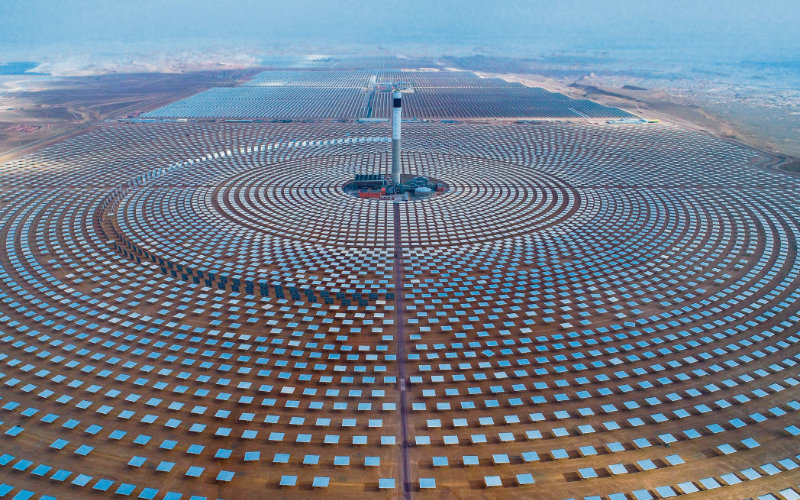Morocco’s Solar Energy Push Faces Setback as Key Power Plant Halts Operations

Since 2009, Morocco has been betting on the development of renewable energies. But for a few years now, the momentum seems to be running out of steam when it comes to solar energy. The culprit is the technology adopted to produce energy at the Noor Ouarzazate III solar power plant.
Achieve energy self-sufficiency through solar energy. This was the ambition of the Moroccan authorities when they inaugurated the Noor Ouarzazate III solar power plant in 2018. It was supposed to produce electricity using CSP (concentrated solar power) technology. But for several weeks now, this plant, 75% owned by the Saudi Acwa Power and 25% by the Moroccan public company Masen, has been at a standstill.
A leak in the "molten salt" storage tank would be the cause of this situation, Acwa Power had announced at the end of March. It will have to wait until November to hope for a resumption of production, i.e. eight good months of interruption that will generate losses of $47 million for the company. However, the breakdown should not significantly affect the Moroccan electricity grid. "The shutdown of Noor III should not result in a loss of more than 0.9% of local net electricity production" in 2024, analyzes Amin Bennouna, professor of physics and energy specialist, for La Croix.
Since 2009, Morocco has been developing a vast and ambitious renewable energy program. The kingdom has natural assets (full-time sun and powerful winds) to achieve its objectives. But the breakdown of the Noor Ouarzazate III plant raises concerns about the strategy adopted in terms of solar energy. In 2020, the Economic, Social and Environmental Council (CESE) had expressed reservations about the choice of CSP technology for Noor Ouarzazate III. "Given the prices of photovoltaics and wind power, the CSP technology is now, despite the advantage of storage, relatively expensive and is no longer justified in the future," the institution noted in a report.
Morocco was aiming to reach 42% of renewable energy production in 2020. An objective it has still not managed to achieve, the 37% mark never having been crossed. Coal remains the main source of electricity production in the kingdom. "The strategy adopted in 2009 was very ambitious. But it was not within our reach, we did not have the means," notes Amin Bennouna. Now, the Moroccan authorities are aiming for 52% of renewable energy by 2030. "The sector is finally maturing and the commissioning of projects is accelerating. This objective should be achieved," the expert believes.
Related Articles
-

Deadly ’Royal Honey’: Moroccan Man Dies After Consuming Tainted Sexual Enhancement Product
27 August 2025
-

Algeria Warns of ’Unprecedented’ Media Attacks Threatening National Security
27 August 2025
-

Africa’s Millionaire Map: Morocco Emerges as Wealth Hub, Trailing South Africa and Egypt
27 August 2025
-

Morocco’s Airport Revolution: $4.4 Billion Boost for Marrakech and Agadir Hubs
27 August 2025
-

EU Unveils Ambitious Mediterranean Pact to Boost Trade and Counter Global Rivals
27 August 2025